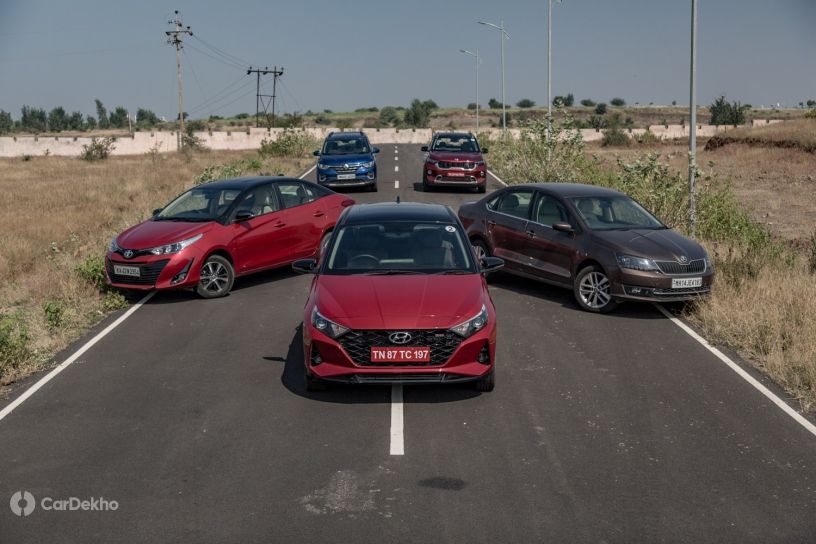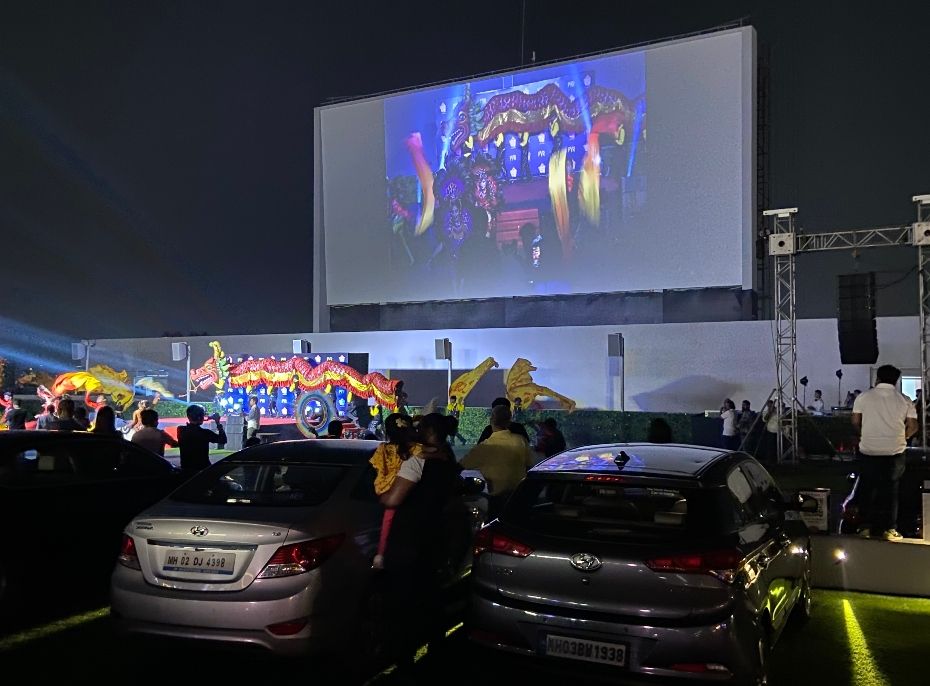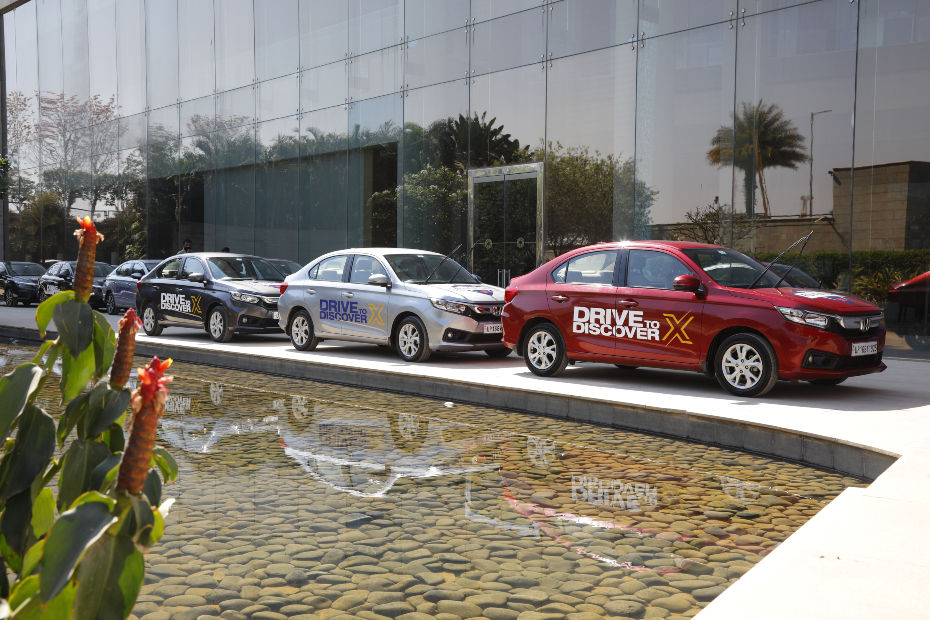iMT vs AMT vs CVT vs Torque Converter vs DCT: Which Is The Best Automatic Transmission For You?
Published On Dec 06, 2020 11:00 AM By Dhruv
- Write a comment
Picking between the right two-pedal driving setup can be quite confusing with all their pros and cons. So we made it a tad simpler for you...

Picking the right transmission has been an easy choice up until now as the Indian market really didn’t have too many options. Most people opted for a manual as those made up the majority of the options, and the handful of automatic options that existed were either too expensive, consumed too much fuel or just couldn’t be had with the car you were looking to buy.
India’s ever-increasing traffic problem and buyers pleading for a more relaxed driving setup has pushed carmakers to offer an automatic transmission option with most new cars today. The trend has reversed so much that cars which can’t be specced with an automatic transmission nowadays are often chastised for this very reason. These options have posed another problem though, and that is choosing the right automatic transmission.
After all, there is iMT, AMT, CVT, a torque converter or a DCT, all of which provide you with the convenience of a two-pedal driving setup. The difference between all of them, however, is the amount of money you need to spend over a regular manual transmission, the kind of driving experience they offer and the fuel efficiency they are capable of returning.
To make things simpler, we compared all these transmission options on these three parameters to find out which one will suit you best. This is not the type of comparison which will have an outright winner. It will instead tell you which transmission might best suit your requirements. We have skipped going over the maintenance cost of these different transmissions as such costs not only vary from type to type, but can also differ vastly between different carmakers.
1. iMT (Intelligent Manual Transmission)

iMT is a term coined by Hyundai for their latest advancement: the clutchless manual transmission. It is as simple as it sounds: a manual transmission in which the clutch pedal is missing. You still have to shift gears by yourself using an H-pattern shifter, just like in a manual transmission. However, an actuator takes care of engaging and disengaging the clutch whenever required, based on a sensor built into the gear shifter. This technology is very new to the Indian market and is only available in cars like the Hyundai i20 and Venue, and the Kia Sonet.
In terms of price, iMT is the most affordable option on the list and it offers quite a bit of value for money. As it is based on a manual transmission and uses most of the same components, the increment in price over a three-pedal setup falls between Rs 20,000 and Rs 25,000.
As far as the drive experience goes, things are pretty much the same as in a manual transmission. We had initial apprehensions about it not being smooth during shifts but all such concerns were blown away when we first drove the Hyundai Venue iMT. There is still a bit of fine tuning that can enhance the experience but the package on offer now is pretty sophisticated in itself. If you are used to driving a manual and are only considering an automatic because you’re always stuck in traffic, then an iMT may be worth considering. Still, considering that it still requires you to shift, its value to lesser-experienced drivers is less than that of usual automatic options.

The only cause of concern here, and this one will only trouble those who like to drive, is the fact that you no longer have clutch control over the car. You will not miss it in city traffic or while cruising on the highway and it might not necessarily be even better for your 0-100kmph times, but you will still end up missing it when approaching corners on a twisty road, especially if you like to heel and toe into a corner.
Lastly, as the transmission acts in a similar capacity as a manual transmission, there is no significant difference in their fuel efficiency. Not only that, in the real world not having to use a clutch means you will end up in the right gear at the right time more often, which could even give you a slight advantage over a regular manual transmission.
2. AMT (Automated Manual Transmission)

Before the iMT came along, the AMT was the most economical automatic transmission option on the market. Just like the iMT, it is similar in its construction to a manual transmission but here, not only is the clutch controlled by an actuator but so is the shifting of gears. So between the iMT and AMT, the latter is better at replicating a true automatic experience. You just take care of the throttle pedal and the brake, and the transmission will decide the best gear for you based on your inputs.
The price of this added convenience is that you will have to shell out Rs 50,000 to Rs 60,000 more over a regular manual transmission. While AMTs offer you the same experience as an actual automatic transmission at a lower price, there are trade-offs you end up making when it comes to the driving experience. The shift quality is not all that smooth and jerks can be felt, especially when downshifting. Then there is the head nod problem. When the AMT is trying to match the engine speed to that of the wheels and is slipping the clutch to make that happen, it induces a head nod which can be quite irritating. This is a lot more prominent when you are driving a little faster than usual. This problem isn’t all that bothersome at slower speeds, but it’s still apparent.

Gear changes are generally slower than usual, in-gear acceleration takes time and out on the highways, you will have to plan your overtakes. The best way to drive an AMT is linearly and with smooth inputs. If you try and hurry it up, especially while accelerating, it kind of gets confused and takes more time to react. Thus, an AMT is best suited for those who like to drive at a sedate pace and aren’t really looking for a sporty experience from behind the wheel, and instead just want the true convenience that an automatic transmission has to offer, without paying too much off a premium over a manual transmission.
As far as their fuel efficiency is concerned, things can be a little different from brand to brand. Maruti’s AMT options come quite close to their manual counterparts when it comes to fuel efficiency and if driven with a light foot, they could probably be even better. Hyundai AMT’s are also decent when it comes to returning good fuel efficiency compared to their manual counterparts. Then there are brands like Tata and Renault who are a little off the mark in this kind of comparison with respect to their manual counterparts. In the end, it all comes down to the kind of tuning that has been done and in that regard, we have to hand it to Maruti for offering some of the best tuned AMT transmissions.
3. CVT (Continuously Variable Transmission)

CVT’s are the most different kind of transmission on this list as they don’t have actual gears. They instead work on a belt-driven system which is suspended off two pulleys. These pulleys can change their radii to mimic any kind of gear ratio, meaning they are capable of offering infinitely different gear ratios. A transmission control unit decides what gear ratios to use depending on your throttle input, speed, incline and other factors.
CVT’s usually end up costing anywhere between Rs 1 lakh and Rs 1.30 lakh over their manual counterparts and they offer a very different experience from a regular manual transmission. In a manual transmission vehicle, you rev the engine and change gears when you are approaching the redline. A CVT transmission on the other hand continuously keeps changing the gear ratios while keeping the engine spinning at a constant rpm. The engine speed can be varied by using more throttle input but the basic concept of ever-changing gear ratios stays the same.

CVTs tend to offer a smooth driving experience as they are very linear in their nature and this is quite good for city driving. A CVT requires a smooth driver and this kind of a transmission is not built keeping a sporty dynamic in mind. It is thus not the best option if you like picking gaps in traffic or making quick overtakes. Some CVT’s come with built in fixed gear ratios that closely mimic a conventional automatic in feel and function.
The real magic of a CVT comes to light when you check out their fuel efficiency. Drive it with a light right foot, the way it’s meant to be driven, and a CVT will end up offering you excellent fuel efficiency in the city. However, if you start pushing a CVT transmission, its fuel efficiency drops quite quickly as the engine operates at higher speeds, thus consuming more fuel. You should be picking a CVT if you drive around a lot in the city, aren’t always looking to get from A to B in the shortest amount of time possible and would like to be frugal while doing so.
4. Torque Converter

A torque converter is one of the oldest kinds of automatic transmissions and over the years, they have gotten more refined and efficient. In the old days, torque converters weren’t really geared for any kind of performance or fuel efficiency. It was just the means to a two-pedal driving setup, as nothing else offered a similar convenience at the time. A torque converter uses two turbines, one connected to the flywheel and the other to the gearbox. A transmission liquid in the middle transfers the force from one side to the other.
In the olden days, torque converters used to offer a damped/slushy effect where you could feel the engine revving and creating power, but it wouldn’t be transferred to the wheels as the liquid in the middle would end up damping a lot of that power. Modern day torque converters however feel a lot different and there is no perceptible loss in power. This however means that they are pricey too and torque converters end up costing anywhere between Rs 1 lakh and Rs 1.5 lakh over their manual counterparts.

Modern day torque converters feel quite responsive and are well suited for city or highway driving. Depending on their tuning, they can either offer great performance or excellent efficiency, or even a good mix of both.
A torque converter is a good bet for you if your driving includes a mix of different scenarios such as slow city crawls in traffic, long highway stints where you easily cruise at triple digit speeds, or a twisty road that requires you to go through the gears often -- and all of that with the option of still returning a fuel efficiency that would be close to its manual counterpart.
5. DCT (Dual Clutch Transmission)

A dual clutch is the most sophisticated automatic transmission that is available in mass market cars today. Over the years, this technology has trickled down from higher-end sports cars and supercars. Just as the name indicates, it has two different clutches which operate two sets of gear ratios, one odd and the other even. When driving around, a computer pre-selects what it feels will be the next required gear using the second clutch, and thus, at the time of the gear shift, the difference between the two is negligible. The computer uses multiple parameters to judge if an upshift, or a downshift will be required. However, the basic premise here is that a higher gear will be selected if you are accelerating and a lower gear will be chosen if you are decelerating.
In terms of price, they are ideally around Rs 1 lakh to Rs 1.5 lakh more expensive than their manual counterparts and are a lot more expensive to repair as well. Not only this, their elaborate setup also makes them quite heavy. However, DCTs make up for all of that with their range of performance.

Due to the extensive machinery onboard, a dual clutch transmission can be fine-tuned to offer quick shifts, or more comfortable shifts. What’s more, all of this can be changed by just changing the tune of the gearbox. This is nowadays possible by simply pressing the drive modes button in most cars, which automatically changes the response you get from the engine, gearbox and even the steering and suspension in some cases.
The DCT then comes across as an automatic transmission that caters best to the enthusiast, with its super quick shifts. It is the closest an automatic transmission has come in replicating the kind of joy you can expect from manual cars. As far as their fuel efficiency is concerned, it all depends on how you drive. A smooth and light input will result in good efficiency and in most cases comes very close to the efficiency numbers you can achieve from a manual gearbox equipped car. Thus a DCT is the best all around package, especially if your driving scenario isn’t limited to just city or highway driving.
110 out of 111 found this helpful














